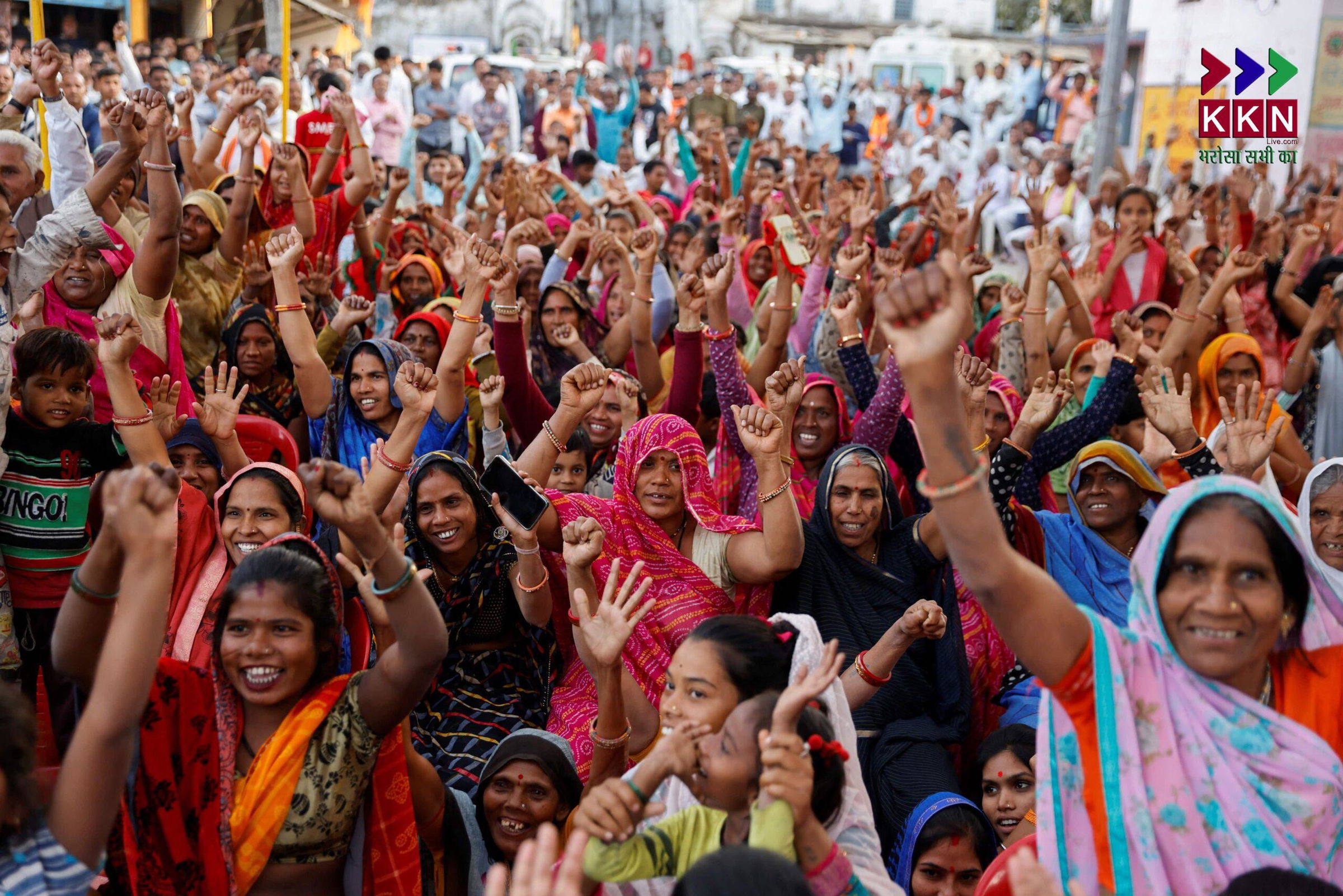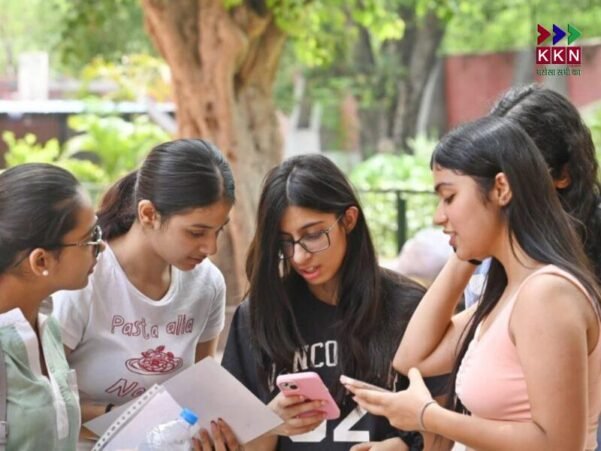
After two decades at the helm of Bihar politics, Chief Minister Nitish Kumar continues to enjoy the steadfast support of the state’s women voters, a loyalty that has remained remarkably consistent despite changing political alliances and mounting challenges. This enduring bond between Bihar’s women and their longest-serving chief minister represents one of the most significant electoral phenomena in contemporary Indian politics, built through a systematic approach to women’s empowerment that has transformed lives across the state.
The Foundation of Unwavering Support
The answer to why women in Bihar still stand by Nitish Kumar lies in a comprehensive transformation that began in 2005 when he first assumed office. Unlike traditional political appeals based on caste or religious identity, Kumar crafted a unique political constituency centered on gender-based empowerment. This strategic decision has created what political analysts describe as a “silent revolution” that continues to shape Bihar’s electoral landscape.
Recent field investigations across Bihar’s constituencies with the highest female voter ratios—Digha, Kumhrar, Bankipur in Patna, and Thakurganj in Kishanganj—reveal a complex but consistent pattern. While women express frustrations about inflation, incomplete implementation of prohibition, and unfulfilled promises, when it comes to voting preferences, Nitish Kumar remains their preferred choice.
Tangible Benefits That Created Trust
The Bicycle Revolution
Perhaps no single initiative captures the essence of Nitish Kumar’s approach to women’s empowerment better than the Mukhyamantri Balika Cycle Yojana, launched in 2006-07. This scheme, providing bicycles to schoolgirls, became both a practical solution to transportation barriers and a powerful symbol of female mobility and independence.
The results have been transformative. Research conducted by Professor Nishith Prakash of Northeastern University found that the bicycle program increased girls’ age-appropriate enrollment in secondary schools by 30% and reduced the gender gap by 40%. The program’s success was so significant that it has been replicated in seven African countries, with the United Nations endorsing it as a tool for women’s empowerment.
In Zambia, where the Bihar model was implemented, the results were equally remarkable: girls’ absenteeism in schools reduced by 27%, late arrivals by 66%, and average commuting time by 35%. The scheme also induced in girls “a desire to delay marriage and pregnancy to an optimum age”.
Economic Empowerment Through Jeevika
The Jeevika program, Bihar’s flagship women’s empowerment initiative, has created India’s largest state-level women’s socio-economic empowerment program. Operating across 34,043 villages in 534 blocks and 38 districts, the program has mobilized over 12 million women into self-help groups.
Bihar became the first state to achieve 10 lakh (one million) self-help groups run by women. These groups have facilitated Rs 12,200 crore worth of bank loans, with women maintaining an exemplary repayment record, having repaid Rs 5,000 crore to avail fresh loans. As Nitish Kumar once observed, “Big shots take huge money from banks and run away from the country, while these women running SHGs make timely payments”.
The program’s success stories are deeply personal. Women like Soni Devi from Jamui district, known as “Lakhpati Didi,” transformed from struggling families earning Rs 3,000 monthly to successful entrepreneurs earning Rs 20,000 per month through Jeevika support. Such transformations have created a generation of economically empowered women who credit their success directly to Nitish Kumar’s policies.
Recent Electoral Reinforcement
The Mukhyamantri Mahila Rojgar Yojana
Ahead of the 2025 Bihar Assembly elections, Nitish Kumar has reinforced his commitment to women’s empowerment through the Mukhyamantri Mahila Rojgar Yojana. Launched by Prime Minister Narendra Modi in September 2025, this scheme has already benefited over 10 million women with Rs 10,000 each for starting small businesses.
The scheme represents more than financial assistance; it’s a continuation of the trust-building that began two decades ago. During the launch, beneficiaries expressed deep gratitude, with one saying, “Had Jeevika programme not been there, it would have been difficult for my survival”. The program’s design through self-help groups ensures it reaches grassroots women who have been part of Kumar’s ecosystem for years.
Sustained Policy Implementation
What sets Nitish Kumar apart is the consistency of his women-focused policies across different political alliances. Whether partnered with the BJP, RJD, or returning to the NDA, his commitment to women’s empowerment has remained unwavering. This consistency has created institutional memory among women voters who see him as their reliable advocate regardless of political machinations.
Statistical Evidence of Electoral Loyalty
The numbers tell a compelling story of women’s electoral behavior in Bihar. Since 2010, women have consistently voted in higher numbers than men, often by significant margins. In the 2020 Assembly elections, women’s turnout stood at 60%, compared to 54% for men. In 167 of 243 constituencies, women outnumbered male voters.
This pattern has been consistent: in 2015, women outvoted men in 202 constituencies with a turnout gap reaching nearly 4%. The trend was established in 2010 when women first surpassed men in electoral participation across 162 constituencies. Crucially, regions with higher women’s turnout have consistently favored the NDA, indicating the political dividends of Kumar’s gender-focused approach.
Beyond Statistics: The Safety Paradigm
Transformation of Social Environment
A fundamental reason for women’s continued support lies in the transformation of Bihar’s social environment under Nitish Kumar’s leadership. As senior journalist Rachna observes, “Nitish has given women a sense of security and mobility. We used to be home by 6 p.m.; now girls can go out even at 10. His work has changed Bihar’s social environment”.
This transformation goes beyond policy implementation to cultural change. In Patna’s Digha constituency, homemaker Mala Devi captures this sentiment: “The government hasn’t given us a house or money, but my daughter can now go out freely. There’s no fear. Everything is safe now”.
Institutional Changes in Governance
The 50% reservation for women in Panchayati Raj institutions, implemented in 2006, created structural changes in rural governance. Bihar became the first state to implement such extensive reservation, subsequently adopted by 20 other states. This policy produced over 71,000 elected women representatives across various levels of local government.
Research indicates that these women representatives have been “challenging existing patriarchal constructs” and emerging as effective “people’s leaders”. While some face challenges from proxy politics where husbands attempt to control their roles, many have asserted independence and transformed local governance.
The Prohibition Factor
Responding to Women’s Demands
The 2016 liquor prohibition in Bihar, implemented in response to women’s demands, represents another cornerstone of Kumar’s appeal to female voters. The policy emerged from grassroots movements like the 2013 protests in Konar village, where women took to streets chanting “Humari aabroo ki keemat pe sharab ka dhandha nahi chalega” (The sale of liquor will not continue at the cost of our honor).
The prohibition policy, while controversial and imperfectly implemented, demonstrates Kumar’s responsiveness to women’s voices. Even critics acknowledge that politically, the measure “cemented his reputation as a leader attentive to women’s voices”.
Current Challenges and Persistent Loyalty
Ground-Level Frustrations
Despite overall loyalty, women across Bihar express genuine frustrations. In Muzaffarpur’s Kumhrar constituency, 60-year-old Durgavati says, “With 500 rupees, we can’t buy enough vegetables. My son has cancer; we can’t even afford proper treatment”. Similar concerns about inflation, unemployment, and inadequate healthcare persist across constituencies.
In slum areas like Jeev Nagar in Patna, residents complain about lack of basic amenities: “We’ve lived here for 50 years. No government help, no gas, no house. They only come for votes”. Yet even amid such frustrations, many acknowledge Kumar’s unique contributions to women’s security and empowerment.
The Calculus of Continued Support
What emerges from ground-level interactions is a pragmatic calculation among women voters. As one woman in Bankipur put it: “We are angry, but we know he has done more than others”. This sentiment reflects a comparative assessment where Kumar’s track record on women’s issues outweighs current disappointments.
The fear of losing gains already made also influences voter behavior. Ruku Kumari from Bankipur expresses a common concern: “Nitish should focus on jobs and food security. We’ll support him, but we fear he might change alliances again”.
Expert Analysis of the Phenomenon
A Strategic Political Innovation
Political analyst Priyadarshan Ranjan describes Kumar’s approach as a “silent revolution,” explaining: “Through 50% reservation in Panchayati Raj, prohibition, and Jeevika, Nitish created an emotional connection with women. Despite policy gaps, that bond remains strong”.
This emotional connection transcends traditional electoral arithmetic. While other parties focus on caste-based appeals, Kumar’s gender-based constituency provides stability across electoral cycles. As JD(U) working president Sanjay Jha notes, “In the last 20 years, Nitish Kumar has touched every woman’s life”.
The Durability Factor
The durability of women’s support for Kumar stems from institutional changes rather than mere promises. Unlike welfare schemes that can be discontinued, Kumar’s policies created structural transformations in education, local governance, economic participation, and social mobility.
This institutional embedding explains why Kumar’s women-focused policies have survived multiple alliance changes. As one analysis notes, his policies “embedded his government in the everyday lives of women across Bihar. Each policy carried a message: the state was listening, and Nitish was its chosen mentor”.
Comparative Electoral Impact
Beyond Bihar’s Borders
The success of Kumar’s women-centric approach has influenced policy discussions beyond Bihar. The bicycle scheme’s replication in African countries and recognition by international development organizations validates the model’s effectiveness.
Within India, the 50% women’s reservation in PRIs, first implemented in Bihar, has been adopted by 20 states, indicating the broader applicability of Kumar’s governance innovations.
National Political Implications
Kumar’s ability to maintain women’s support across two decades offers lessons for national politics. In an era where voter loyalty is increasingly volatile, his sustained appeal to women demonstrates the power of consistent, targeted governance over populist rhetoric.
The phenomenon also highlights how sub-national leaders can create durable political constituencies through innovative policy approaches, challenging conventional wisdom about electoral politics in India.
Looking Ahead: The 2025 Test
Electoral Arithmetic
As Bihar approaches the 2025 Assembly elections, women constitute nearly half the electorate and consistently vote in higher proportions than men. This demographic advantage, combined with two decades of trust-building, provides Kumar with a significant electoral foundation.
Recent polling data suggests that constituencies with higher women’s participation tend to favor the NDA, indicating that Kumar’s gender-based political strategy continues to yield electoral dividends.
Sustaining the Coalition
The challenge for Kumar lies in maintaining women’s support while addressing their evolving concerns about economic hardship and unfulfilled promises. His recent emphasis on entrepreneurship through the Mahila Rojgar Yojana suggests an adaptation to changing expectations while maintaining core commitments to women’s empowerment.
The upcoming election serves as a crucial test of whether institutional changes and emotional bonds built over 20 years can withstand immediate economic pressures and political fatigue.
The Enduring Bond
The relationship between Nitish Kumar and Bihar’s women voters represents more than conventional electoral politics. It exemplifies how sustained, sincere governance focused on empowerment can create lasting political bonds that transcend immediate grievances and short-term disappointments.
After 20 years, women in Bihar continue to stand by Nitish Kumar not because they are satisfied with everything he has done, but because they recognize the fundamental transformation he initiated in their lives and their children’s futures. From bicycles that symbolized mobility to self-help groups that provided economic agency, from political representation that gave them voice to safety measures that granted freedom of movement, Kumar’s policies created a comprehensive ecosystem of empowerment.
This ecosystem, once established, became self-reinforcing. Women who benefited from these policies became stakeholders in their continuation, creating a political constituency with both emotional and material investments in Kumar’s success. Even when they express frustration with specific failures or unmet promises, they retain faith in the leader who fundamentally altered the trajectory of women’s lives in Bihar.
As Bihar heads toward another electoral test, the enduring support of women for Nitish Kumar stands as testament to the power of transformative governance. In a political landscape often characterized by short-term promises and volatile loyalties, the 20-year bond between Bihar’s women and their chief minister represents something rarer: a political relationship built on trust, sustained by results, and strengthened by time.


